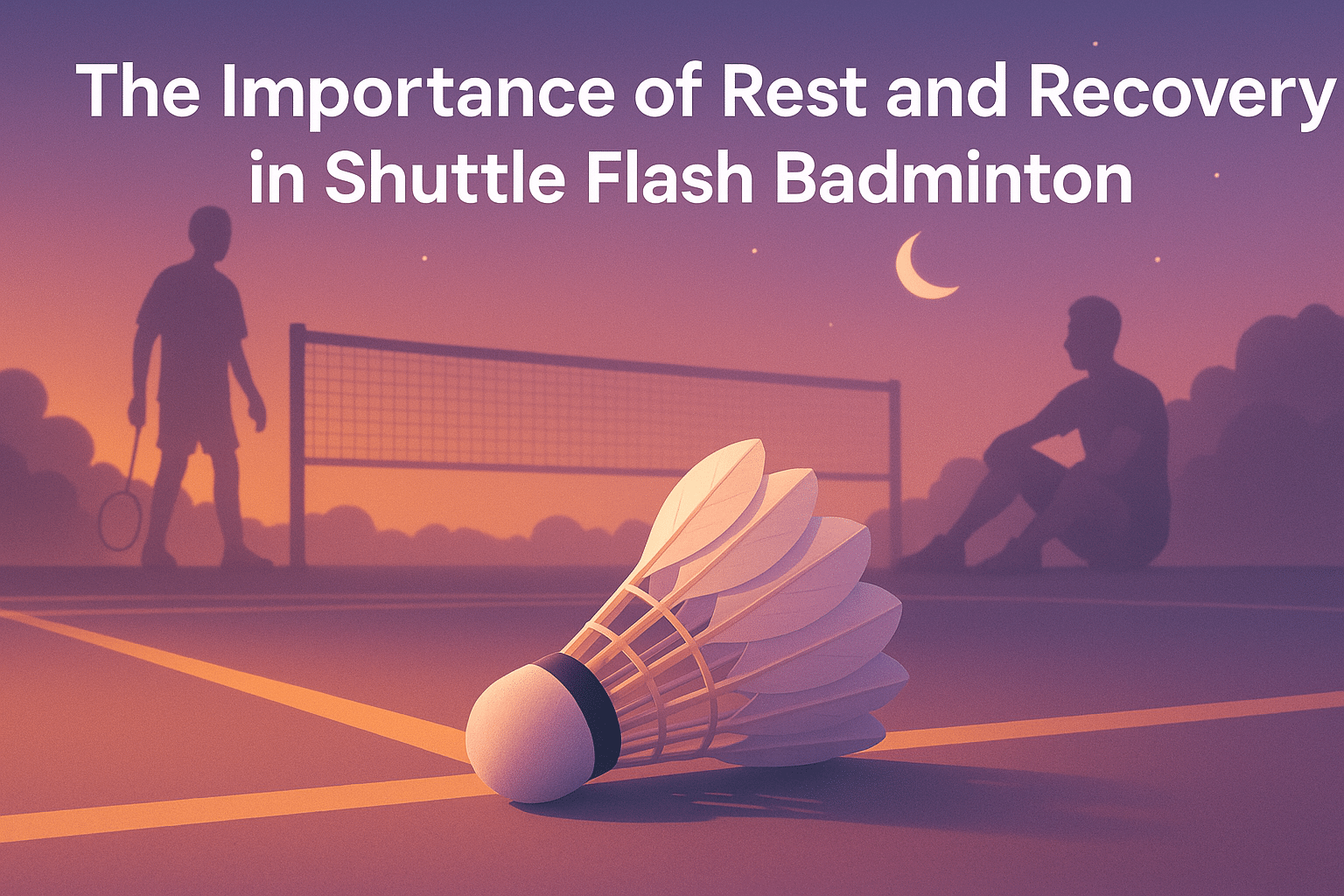The Importance of Rest and Recovery in Shuttle Flash Badminton
Shuttle Flash Badminton is a fast-paced, high-intensity sport that requires agility, speed, and endurance. While players often focus on training regimes and strategies, the significance of rest and recovery is sometimes overlooked. This blog post delves into why rest and recovery are essential for Shuttle Flash Badminton players and offers practical tips to enhance performance and prevent injuries.
Table of Contents
1. Introduction
2. The Science Behind Rest and Recovery
3. Benefits of Proper Rest for Badminton Players
4. Effective Recovery Strategies
5. Common Mistakes to Avoid
6. Conclusion
7. FAQs
The Science Behind Rest and Recovery
Rest and recovery are physiological necessities for athletes, allowing the body to repair tissues, replenish energy stores, and reduce the risk of injuries. During intense physical activity, muscles undergo micro-tears and the body uses glycogen stores to fuel movement. Without adequate rest, these micro-tears can lead to muscle fatigue, soreness, and even long-term injuries.
Moreover, rest isn’t just about physical recovery. It also allows the nervous system to recuperate, which is crucial for maintaining sharp reflexes and mental acuity—both vital for Shuttle Flash Badminton.
Benefits of Proper Rest for Badminton Players
Whether you’re a beginner or a seasoned Shuttle Flash Badminton player, rest plays a critical role in your overall performance. Here are some benefits:
1. Enhanced Performance: Adequate rest ensures that your muscles are repaired and ready for the next session, leading to improved performance on the court.
2. Injury Prevention: Regular recovery periods help in preventing overuse injuries that are common in high-intensity sports like Shuttle Flash Badminton.
3. Mental Clarity: Rest improves cognitive functions such as concentration, decision-making, and reaction times, which are crucial for strategic play.
4. Long-term Health: Consistent recovery practices contribute to better overall health, reducing stress levels and promoting a balanced lifestyle.
Effective Recovery Strategies
Implementing effective recovery strategies can make a world of difference. Here are some tried-and-tested methods:
1. Sleep: Aim for 7-9 hours of quality sleep per night. Sleep is the most powerful recovery tool, allowing your body and mind to rejuvenate.
2. Nutrition: Consume a balanced diet rich in proteins, carbohydrates, and healthy fats to aid muscle repair and replenish energy stores.
3. Hydration: Stay hydrated to maintain optimal physical and mental performance. Water is essential for nutrient transport and temperature regulation.
4. Active Recovery: Engage in low-intensity activities, such as walking or yoga, to promote blood circulation and reduce muscle stiffness.
5. Stretching and Foam Rolling: Incorporate stretching routines and foam rolling sessions to improve flexibility and reduce muscle tension.
Common Mistakes to Avoid
While focusing on recovery, it’s easy to fall into some common pitfalls:
1. Ignoring Pain: Never ignore persistent pain. It’s your body’s way of signaling that something is wrong.
2. Skipping Rest Days: Consistent training without rest can lead to burnout and decreased performance.
3. Poor Nutrition: Recovery isn’t just about rest; what you eat significantly impacts how well you recover.
4. Inconsistent Sleep Patterns: Irregular sleep can disrupt your body’s natural recovery processes.
Conclusion
In Shuttle Flash Badminton, as in any sport, rest and recovery are just as important as the training itself. By prioritizing these elements, players can enhance their performance, prevent injuries, and ensure long-term success in the sport. Remember, rest is not a sign of weakness but a strategic tool to maximize your potential.
FAQs
Q: How many rest days should a Shuttle Flash Badminton player have?
A: It varies depending on the intensity of training, but generally, 1-2 rest days per week are recommended.
Q: Can I practice light badminton on a rest day?
A: Yes, light practice or active recovery can be beneficial, but ensure it doesn’t strain your muscles or lead to fatigue.
Q: What should I eat for optimal recovery?
A: Focus on a balanced diet with adequate proteins, carbs, and healthy fats. Foods rich in antioxidants and anti-inflammatory properties are also beneficial.
Q: Is stretching before or after playing more effective?
A: Both are important. Dynamic stretching before playing helps warm up the muscles, while static stretching after playing aids in recovery.
By incorporating these insights and strategies into your routine, you can ensure a sustainable and successful Shuttle Flash Badminton journey. 🏸💪
